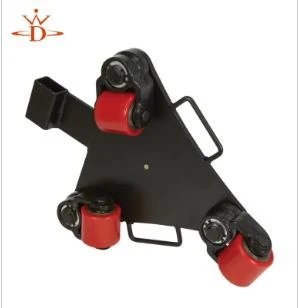Versatile Jib Crane with Adjustable Height for Enhanced Operational Flexibility
The Versatility of Adjustable Height Jibs in Modern Construction
In the ever-evolving world of construction and heavy lifting, the adaptability and versatility of equipment can significantly enhance productivity and efficiency on job sites. Among the tools gaining popularity in this domain is the adjustable height jib, a device that provides unique solutions for a variety of lifting needs. Understanding the features, applications, and advantages of adjustable height jibs can help construction professionals make informed decisions that improve operational performance.
What is an Adjustable Height Jib?
An adjustable height jib is a type of crane or lifting device designed to provide flexibility in lifting loads at varying heights. This equipment typically consists of a horizontal beam that extends outward from a vertical mast, which can be raised or lowered to suit specific lifting requirements. The primary feature of this tool is its ability to modify the height of the jib arm, allowing operators to adjust the reach while maintaining safety and stability during lifting operations.
Applications of Adjustable Height Jibs
The versatility of adjustable height jibs makes them applicable in numerous industries, including construction, manufacturing, and warehousing. In construction sites, these jibs are used to lift and move materials such as steel beams, concrete panels, and heavy machinery, allowing for efficient assembly and installation processes. The adjustable height feature is especially beneficial in spaces with height restrictions or varying elevations, enabling workers to effectively operate in areas where traditional cranes may struggle.
In the manufacturing sector, adjustable height jibs facilitate the movement of heavy components between stations on assembly lines. By allowing operators to customize the height, they can streamline workflows and reduce the risk of workplace injuries caused by improper lifting techniques. Warehouses also benefit from the use of these jibs, as they are useful in loading and unloading goods from trucks and storage racks, particularly in tight spaces where maneuverability is essential.
Advantages of Adjustable Height Jibs
adjustable height jib

1. Enhanced Flexibility The primary advantage of adjustable height jibs is their ability to adapt to various lifting situations. Operators can quickly change the height of the jib to accommodate different load sizes and space constraints, making them an essential tool for multi-faceted job sites.
2. Improved Safety Safety is a paramount concern in construction and lifting operations. Adjustable height jibs are designed with stability in mind, often featuring support mechanisms that ensure loads are lifted securely. By minimizing the need for workers to engage in awkward lifting postures, these jibs help reduce the risk of accidents and injuries.
3. Cost Efficiency Investing in an adjustable height jib can prove financially beneficial for construction companies and manufacturers. The ability to execute multiple tasks with one piece of equipment minimizes the need for additional machinery and reduces labor costs. Furthermore, the time saved during operations can lead to faster project completion, resulting in additional savings.
4. Ease of Use Modern adjustable height jibs are designed for user-friendliness, with intuitive controls that streamline operation. Workers can quickly learn to use these jibs, reducing the need for extensive training and enabling quicker turnaround times on projects.
5. Compact Design Many adjustable height jibs come with a compact design, making them suitable for operations in confined areas. Their ability to fit into tight spaces enhances their versatility, allowing for effective use in various environments.
Conclusion
The adjustable height jib is a remarkable tool that exemplifies the blend of functionality and safety in heavy lifting operations. Its unique features cater to a broad range of applications, making it indispensable across various industries. By enhancing flexibility, improving safety protocols, and driving cost efficiencies, adjustable height jibs have rightfully earned their place in modern construction practices. As the industry continues to innovate and evolve, these devices are likely to become even more integral to effective project execution and operational success.
-
Unlock Seamless Relocation with Our Heavy Equipment Moving ExpertiseNewsJun.06,2025
-
Unleash Unrivaled Flexibility with Our Adjustable Gantry CraneNewsJun.06,2025
-
Unleash Heavy-Duty Efficiency with Our Industrial Gantry Crane SolutionsNewsJun.06,2025
-
Revolutionize Steel Handling with Our Magnetic Lifter RangeNewsJun.06,2025
-
Master Equipment Mobility with Premium Machinery Mover SolutionsNewsJun.06,2025
-
Elevate Your Material Handling with Magnetic Lifter TechnologyNewsJun.06,2025
-
YS Permanent Lifting Magnets: The Smarter Way to Handle SteelNewsMay.22,2025
